The drum in the Candy washing machine does not spin
 What happens after loading laundry into the drum of a Kandy washing machine? The hostess sets the washing mode, and the machine begins to fill with water. As soon as the required volume of water has been collected, the engine starts and the machine starts washing, but after a while the machine stops unplanned. Why doesn't the drum spin in the washing machine? We will look for an answer to this difficult question.
What happens after loading laundry into the drum of a Kandy washing machine? The hostess sets the washing mode, and the machine begins to fill with water. As soon as the required volume of water has been collected, the engine starts and the machine starts washing, but after a while the machine stops unplanned. Why doesn't the drum spin in the washing machine? We will look for an answer to this difficult question.
Initial actions
What to do if your washing machine stops in an emergency? In such a situation, there is no need to panic. The first step is to turn off the power and unplug the cord from the outlet. After this, you need to prepare to drain the water. Draining is carried out through the filter hole. Opposite the hole it is necessary to install some kind of container designed to drain water. After the water has been removed, you can remove the laundry from the drum.
When “making a diagnosis” it is necessary to understand at what point the stop occurred. If it happened while the spin was taking place, the laundry will simply be damp and there will be no traces of detergents on it. If blocking occurs during washing, then all the items in the drum will be powdered.
After the laundry has been removed, you can attempt to spin the drum manually. If the attempt was unsuccessful, then most likely the cause was a foreign body or a broken part. If the drum turns without much effort, then the problem lies in the electronic system.
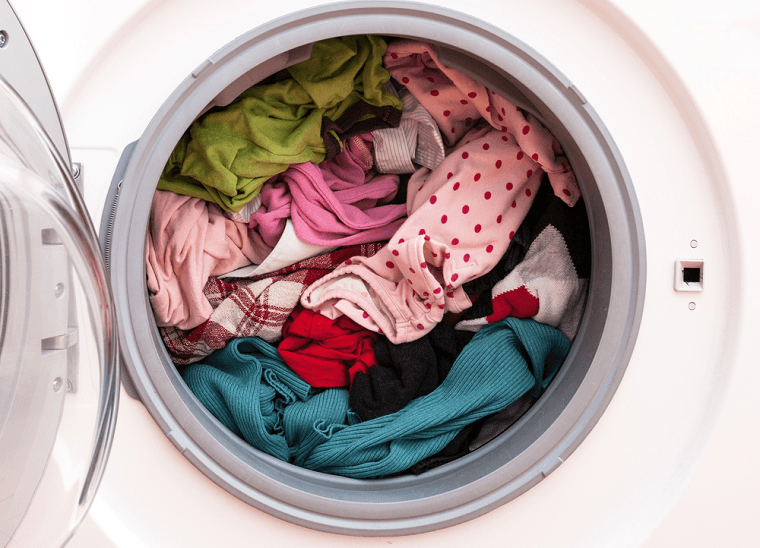
One more thing. Often, the housewife overloads the drum and this can also cause it to stop during washing.In this case, you can divide the laundry put into the wash into two parts and try to restart the machine.
Machines produced these days are equipped with a sensor that monitors the weight of the loaded laundry. This data is reflected on the monitor.
Before making a “final diagnosis”, it is necessary to check the hoses for pinching, as well as the condition of the filter. In fact, there are many reasons why the Candy machine does not spin the drum. We'll have to look at them one by one.
Foreign objects in the tank
Often, due to an oversight by the owner, foreign objects get into the tank and at the most unexpected moment they can stop the rotation of the drum. An object that gets stuck between the drum and the tank wall can easily cause serious damage. These breakdowns lead to tank repairs.
To search for foreign objects, it makes sense to arm yourself with a flashlight and conduct a thorough inspection of the drum. It is likely that a button or something else will be found that caused the unit to stop.
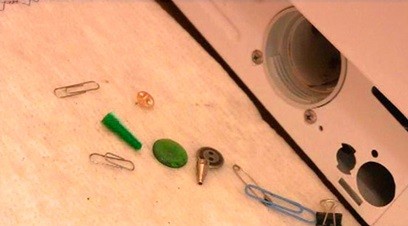
The foreign body must be removed with caution. There are a large number of objects that can get into the machine completely by accident and it is not always possible to see them through the holes in the drum. To remove small items, you will have to partially disassemble the machine body.
Disassembly sequence
The incomplete disassembly algorithm does not look very complicated. To ensure comfortable work, it is necessary to place the machine in such a way that it is accessible from all sides. Next you need:
- Unscrew the bolts located on the rear panel and holding the top cover;
- push the lid forward with some force and then remove it;
- we unscrew the fasteners that are located at the back and remove the back wall;
- remove the wiring from the heater, loosen its nut, push the pin inside;
- very carefully remove the heating element.
After its removal, a hole is formed through which you can continue to search and remove foreign objects. If a foreign object is stuck in the upper part of the drum, you can spin it, then the stuck objects will fall down, from where they can be easily removed.
Bearing failure
An emergency stop of the drum can also occur due to a bearing failure. When disassembling the drum, you need to check the integrity of the bearing and seal lip; by the way, they can be replaced immediately.
Wear can be determined by the sound of the machine; a worn bearing makes a grinding, clanging, knocking sound. In addition, the machine begins to vibrate strongly during washing. All this indicates that the bearing is worn out and that it is time to replace it.
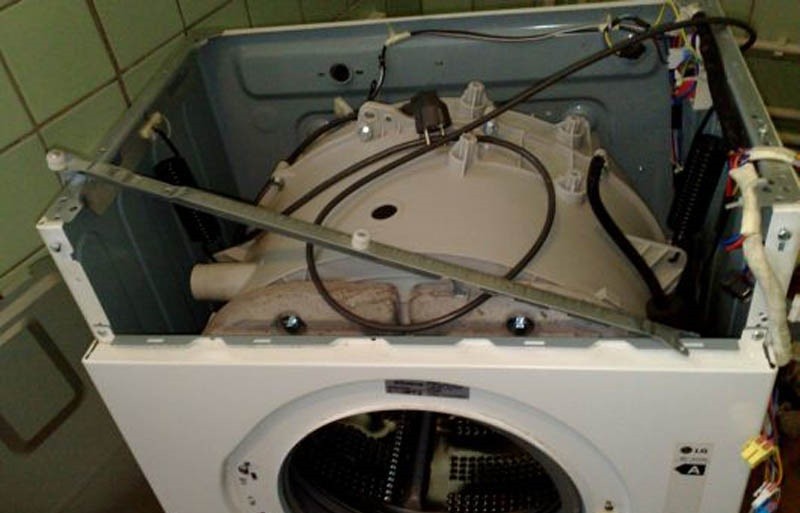
To remove the bearing, it is permissible to use available tools. After it is dismantled, grease is driven into its installation site. Before removing the worn bearing, it is necessary to disassemble the washing machine. This procedure will require ordinary plumbing tools. With its help, you need to remove the front cover, dispenser, and automatic control. Each of the blocks is secured with screws or plastic clips; they must be removed before removing parts and assemblies.
After the front panel and other components are removed, you can remove the back and top covers. The counterweight is then removed. All this is necessary to gain access to the bearing assembly.
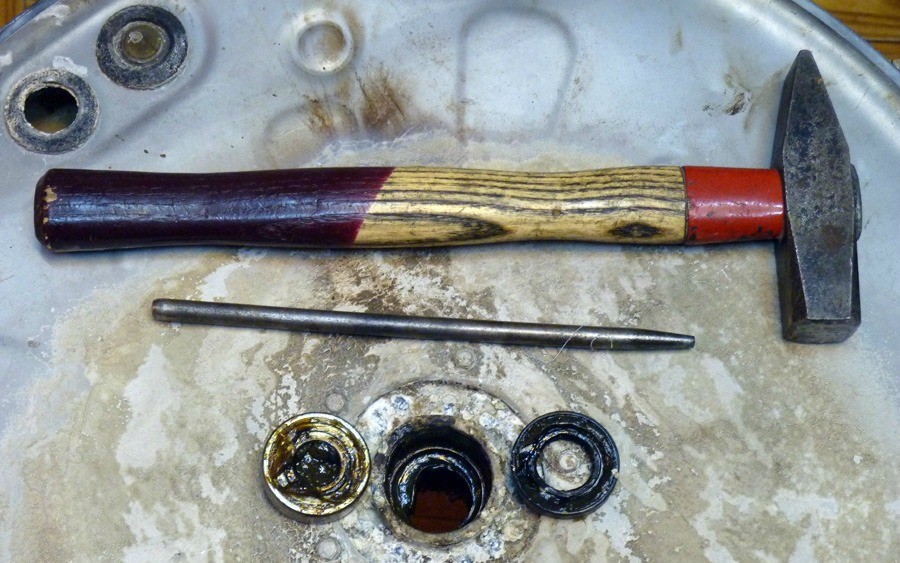
When disassembling the washing machine, it is imperative to dismantle the pipes, in other words, remove everything that is necessary for free access to the bearing assembly and the connection between the drum and the tank.
Immediately before removing the assembly, which includes the tank and drum, the electric motor is removed from the housing. Now you can begin disassembling the tank-drum assembly. After the unit is removed, it is advisable to move it to the workbench. Next, the bearing and cuffs are removed, lubricant is filled in and new parts are installed.
When assembling the drum, special care must be taken; the joint must be treated with sealant, this is necessary to prevent leaks.
Drive belt
To gain access to the drive belt, you must remove the rear wall of the machine. During operation, the belt could slip off the pulley; it will be necessary to return it to its place and check the operation of the machine. During operation, the belt may wear out, begin to slip, and eventually break. In this case, this part must be replaced.
When installing the belt in its regular place, it is necessary to take into account which engine is used in the design of the machine. If an asynchronous power unit is installed, then most likely a V-belt is used. If a commutator motor is installed, then poly V-belts are installed.
To install the V-belt, you need to loosen the engine and move it slightly towards the drum. Then install the belt on the pulleys and return the engine to its original position. An adjusting screw must be used to tension the belt. The belt tension should be tight; when you press the belt, a 5 mm sag is considered normal.
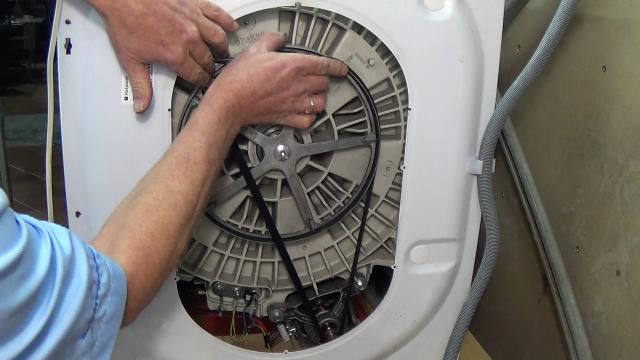
The cross-section of a poly V-belt resembles the profile of a gear. The belt parameters are marked on its outer side. The method for replacing it is identical to the method for replacing a V-belt. The tension force of a poly-V belt should be weaker than that of a V-belt.
Pay attention to the engine
During operation, a situation arises when the brushes, as a result of wear, cease to transmit current to the rotor of the power plant. As a result of this, at some point in time the engine will simply stop. Therefore, it is necessary to periodically check their condition.
Important! To replace, you must use only those brushes that are designed specifically for the installed electric motor model. Installing different brushes will sooner or later lead to engine failure.
To check the condition of the “engine” it is necessary to dismantle the back wall of the “home assistant” housing. Before doing this, you need to disconnect the machine from the power supply.
- Disconnect the engine from the wires that go to it.
- Having pulled out the unit, we lay it on its side, so that the place where the brush is installed is at the top.
- Unscrew the fasteners and remove the brush from the engine housing.

When replacing worn brushes, one must not forget about the condition of the commutator. During operation, carbon deposits and scratches form on it. To remove them, use “zero” abrasive paper or you can use a hard eraser. After removing the worn brushes, install new ones.
After assembly, the engine is returned to its place, the wires are connected, and the cover is replaced. Then you need to check the washing machine for functionality. And only after this the washing machine can be put into operation.
The engines that are installed in units of this class are highly reliable, and in order for it to break, you need to make a remarkable effort. But, sometimes, a short circuit in the winding or a break in the wires may occur either at the stator or at the rotor. The first sign of such a situation is that in idle mode the machine works normally, but when you put laundry in the drum and start it in operating mode, the protection is triggered and the electricity in the house is turned off.
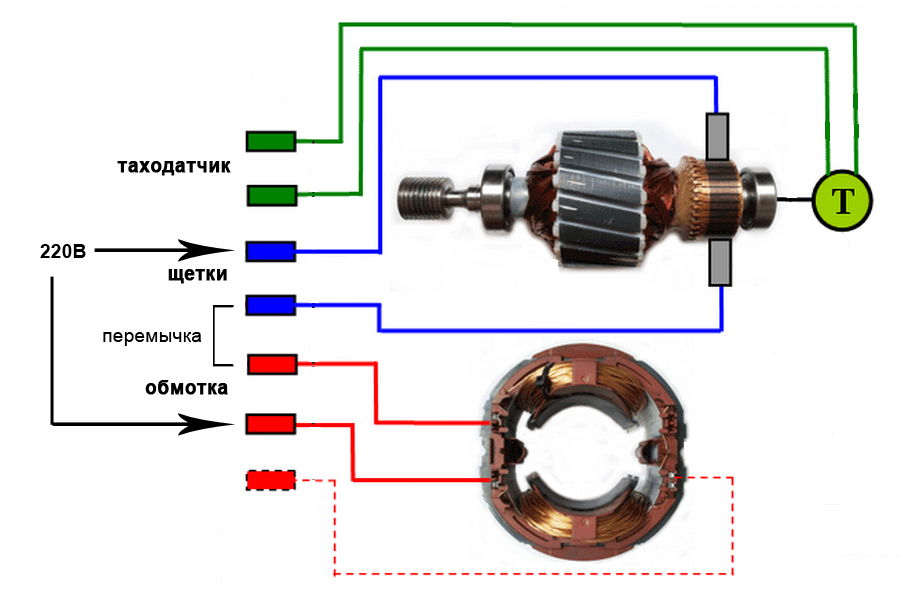
When the wires are shorted or broken, the drum simply does not rotate, but the machine makes a hum. An engine in this condition can be repaired, but if there is a smell coming from the power compartment when you turn on the power, then most likely the engine will have to be replaced.
To check the condition of the windings of a power plant, a device called a multimeter or tester is used. We need to check the resistance on adjacent lamellas; the discrepancy should not exceed 5 ohms. We test the resistance on the winding. We install one probe on the assembly, and run the other probe along the stator. If the resistance is as high as possible, this is normal. If they are broken, then the resistance will tend to zero.
Prevention of breakdowns
If the problems that have arisen have been resolved, then it is necessary to take measures to prevent their occurrence in the future. To do this, you need to follow a few simple rules. In particular, before loading the drum, you need to carefully check the pockets, in which any small things, for example, a lighter, may remain.
You also need to use a special net into which small items and underwear are loaded. In order to protect the electronics from power surges, it is advisable to connect the machine via Voltage regulator. When placing laundry in the drum, you should try not to overload it.
Interesting:
Reader comments
- Share your opinion - leave a comment




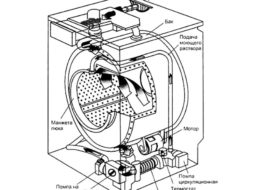

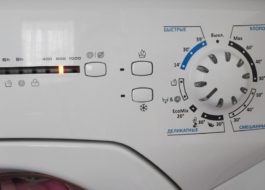














Add a comment